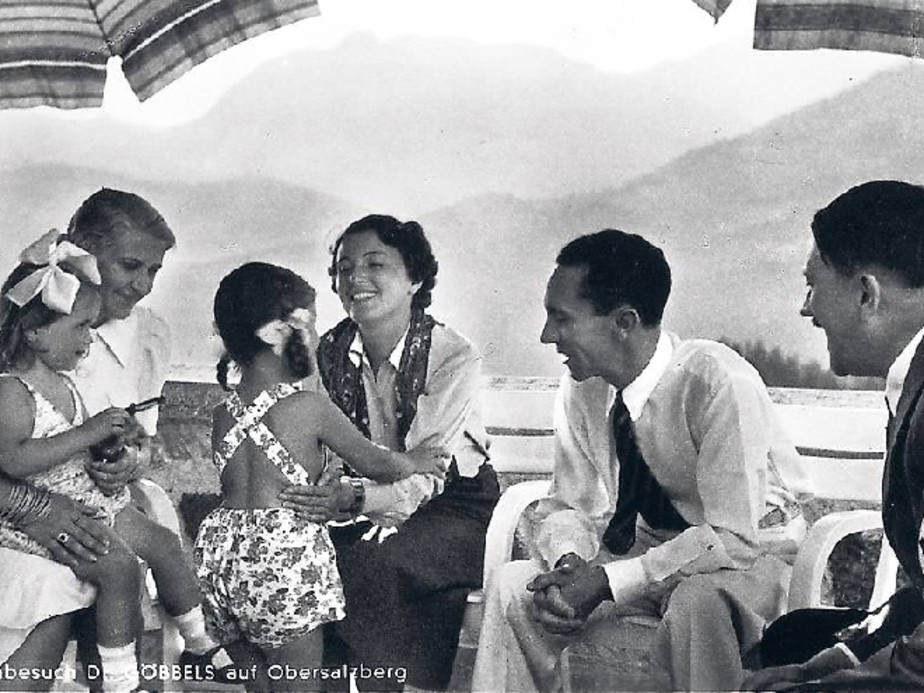
March 23, 2016, by Harry Cocks
Popular Photography and the Third Reich
How should historians use “vernacular photography,” pictures and snaps taken for personal use, and not for publication? In a new article for the journal Central European History (see link), Professor Maiken Umbach addresses this question by exploring the significance of personal photography and photo-album making during Third Reich. These records offer valuable insights into everyday life under Nazis at a time when cheap cameras made mass photography into a popular craze with the potential to turn mundane life into conscious acts of self-representation. These photographs, Professor Umbach argues, give us a visual record of the ways in which people formed subjectivities under Nazism, and lead us to question narratives that automatically see their subjects as resisters, victims or supporters. Personal photos recall what people did with the ideology of Nazism, how they “translated it back into a sense of selfhood.”
The regime also used vernacular-style images to secure its legitimacy. Hitler’s favourite photographer Heinrich Hoffman often shot the Fuhrer in informal poses taken in a homemade style that aimed to show him in unfamiliar poses of holiday-making relaxation (see the image above of Hitler and the Goebbels family on holiday in the Obersalzburg). The government also distributed albums to encourage people to keep records of their service in the armed forces, the Labour Front and other wartime auxiliary organisations. Others were produced as commercial products to help document. historic events such as 1936 Olympics. One such album, from 1944, documents a young woman’s service in Reich Labour Service and Auxiliary War Service, also showing scenes of relaxation and leisure devoted to “unremitting gaiety” rather than work. The focus on recording and seriously enjoying moments of leisure in these albums records such moments as deliberate, and hard-earned, an achievement to be celebrated and recorded. In this way Germans cast the occasion of being away from home, on labour duty, on child evacuations, even at the front, as a positive holiday experience. These holiday-style albums, Umbach suggests, “asserted happiness in the face of separation from loved ones, physical exertion, and possible danger” and allowed participation in a zeitgeist defined through new beginnings and excitement. Photography of this type “entailed a certain affective alignment with some of the ways in which the regime sought to ‘naturalize’ its political ambitions in terms of the shared sentiments, aspirations, and instincts of the imagined community of the Volk.” Other albums recorded images that reflected racial ideologies or simply the spirit of the times. One school trip to Balkans taken in 1938 recorded Slavic “types,” slouched in passivity on the streets of Belgrade, while others recorded driving proudly on the “Fuhrer’s roads.”
Private and professional photographies existed in a relation with each other, Professor Umbach suggests. This was not a matter of downward “influence” but was instead a process of appropriating visual templates, even propagandistic ones, which were constructed from older conventions and pictorial precedents. This was not merely a matter of “internalizing” Nazi forms and ideologies, but mass market vernacular photography did make those photographed into performers. Everyday lives became acts of representation and commemoration. When people staged their lives for the camera, as they wanted them to be recorded and remembered, boundaries between private and public lives faded. This did not turn people into Nazis, but did “prove conducive to the ambitions of totalitarianism: as a form of affective and performative political behaviour that transcended that which had traditionally been defined as the business of politics.” Photography, Professor Umbach suggests, did not produce a Nazi view of “experience” but it did make it thinkable. Vernacular photographs had the capacity to turn “experiences into material realities.”
Maiken Umbach, “Selfhood, Place, and Ideology in German Photo Albums, 1933-1945”, Central European History 48 (2015), 335-365.
http://www.historytoday.com/podcast/discussion-about-mein-kampf

Great post!